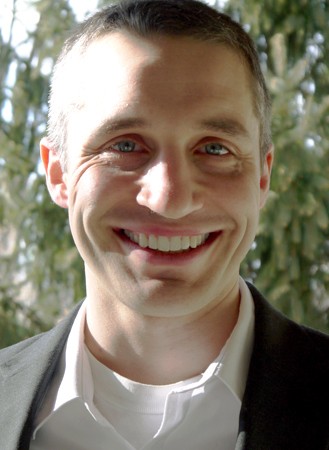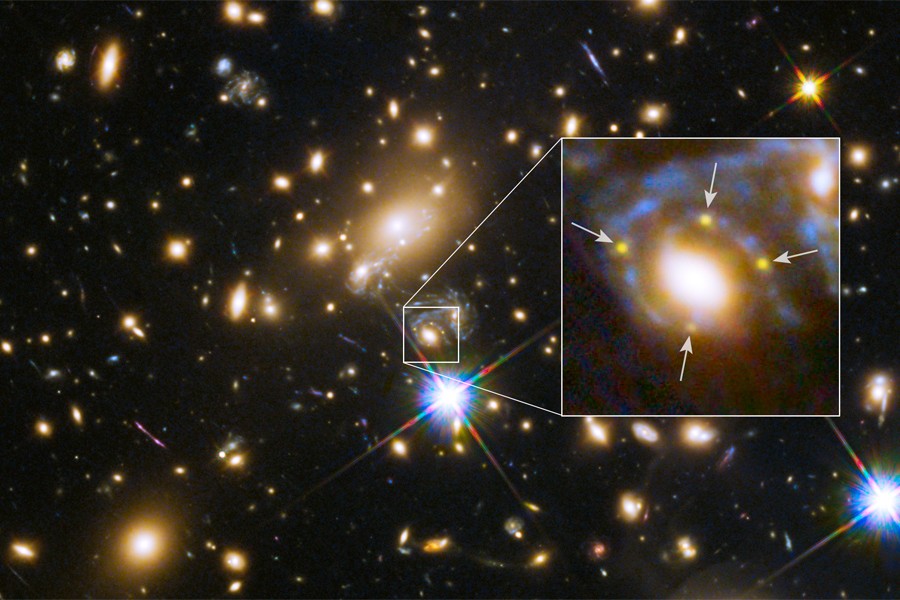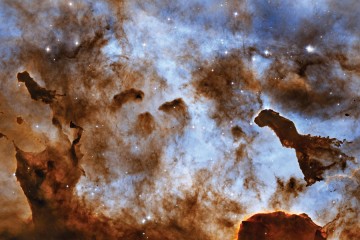A Johns Hopkins astronomer played a key role in the recent discovery of a distant exploding star whose light split into four distinct images in a display just seen for the first time by scientists using the Hubble Space Telescope.

The multi-image effect occurred when light from the exploding star passed through a cluster of galaxies located between the supernova and the Earth. The gravitational pull from one of the galaxies within the cluster is acting as a "cosmic lens," bending and magnifying the light, creating four separate images.
Famed physicist Albert Einstein first predicted this effect, but it had never been observed before in the light of a supernova until late last year. The discovery was reported March 5 by a group of 31 researchers writing in a special issue of the journal Science that paid tribute to Einstein's Theory of General Relativity.
Steven A. Rodney, a Hubble Postdoctoral Research Fellow in the Department of Physics and Astronomy at Johns Hopkins, was listed as second author on the Science paper. Rodney—who is supervised by a Johns Hopkins Nobel Laureate, Physics and Astronomy Professor Adam Riess—leads a research group called FrontierSN (the SN is short for supernova). This team, assembled two years ago, uses the Hubble Space Telescope to search for stellar explosions like this one behind massive galaxy clusters.
The recent "multiply-imaged" supernova, named "Supernova Refsdal" for Norwegian astrophysicist Sjur Refsdal, is one of about 50 supernovae that the FrontierSN team members have located.
"This is by far the most spectacular object we've found so far," Rodney said.
Rodney likened the four different supernova images detected by Hubble to four different trains, leaving a station simultaneously and traveling at the same speed, but moving along different tracks. The massive cluster of galaxies between Earth and the supernova causes a gravitational warping of spacetime, which is akin to different landscapes that these trains must pass through. Each takes a different route, some more direct than others, so the trains do not all pull into the final destination at the same time. For Supernova Refsdal, each of the four different images must have first appeared at slightly different times. Rodney's team was not lucky enough to catch those initial flashes, but the researchers are currently using the Hubble Space Telescope to monitor the supernova, waiting for the four images to fade away.
"It's as though we just walked up to the train station and saw these four trains passing through," Rodney explained. "We didn't get there in time to catch the arrival of the engines in front, but we're watching now to see when each caboose goes by."
By measuring how much time elapses between the fading of each image and analyzing the paths these light beams pursue, Rodney and his collaborators hope to learn more about the distribution of the mysterious dark matter that dominates the mass of the lensing galaxy cluster. Gravitational lenses like this cluster are one of the primary tools that astronomers use for studying dark matter, which makes up large portions of the universe but cannot be seen. The research may also yield clues concerning the expansion rate of the universe.
The four time-delayed images of this supernova would have already made Supernova Refsdal an unprecedented discovery. But in this case the universe has more in store because the supernova is expected to make a return appearance within the next five years.
"My team," Rodney said, "will continue to monitor this galaxy cluster with Hubble, watching for the appearance of that fifth and final image. We're hoping this time we can catch it early, as it first arrives, to get an even better measurement of this unique explosion."
Posted in Science+Technology
Tagged adam riess, astronomy, astrophysics, hubble









